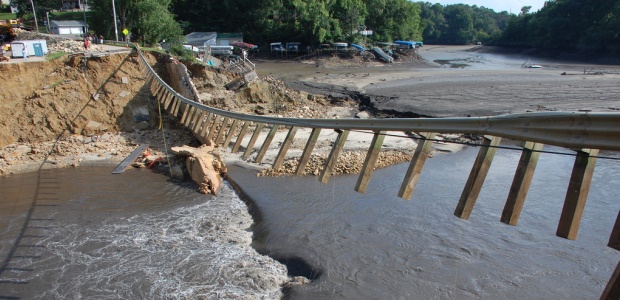
FEMA Encouraging Dam Safety Awareness on May 31
Since 1998, the number of high hazard-potential dams has increased from 9,281 to more than 14,700, according to the 2013 update of the National Inventory of Dams.
May 31 is National Dam Safety Awareness Day, which commemorates the failure of the South Fork Dam in Johnstown, Pa., in 1889, triggering the infamous Johnstown flood that killed more than 2,200 people. It is the worst dam failure in United States history, according to FEMA.
The agency noted that, since 1998, the number of high hazard-potential dams has increased from 9,281 to more than 14,700, according to the 2013 update of the National Inventory of Dams.
"Understanding the need for dam owners to proactively mitigate the risks associated with dam failures, states like Kentucky are striving to improve dam owner awareness through condition assessments on all high-hazard potential dams and to ensure that communities have a plan in place to protect their citizens in the event of a dam failure or incident through Emergency Action Plans," FEMA's online page about the day reported. "Prior to their efforts as part of Fiscal Year 13 National Dam Safety Program, 95 percent of the state-regulated hazard potential dams in the National Inventory of Dams for Kentucky did not have condition assessments and 68 percent of high-hazard potential dams in the National Inventory of Dams for Kentucky did not have Emergency Action Plans. To mitigate this, the Kentucky Dam Safety program inspected every high-hazard potential dam to make a condition assessment of the dam. Each inspection included a report to the dam owner indicating deficiencies and providing a plan of action for the dam owners to address these deficiencies. As a result of these efforts, 166 dams were inspected in Fiscal Year 13, and Kentucky Dam Safety has now rated 100 percent of high-hazard potential dams for condition assessment. Moreover, they have either full or simplified Emergency Action Plans for 77 percent of the high-hazard potential dams in the state."
FEMA and the National Dam Safety Review Board are urging private-sector dam owners to become involved and take action to improve the nation’s dam infrastructure on May 31.
According to the National Dam Safety Program, dams can fail for one or a combination of the following reasons:
- Overtopping caused by floods that exceed the capacity of the dam
- Deliberate acts of sabotage
- Structural failure of materials used in dam construction
- Movement and/or failure of the foundation supporting the dam
- Settlement and cracking of concrete or embankment dams
- Piping and internal erosion of soil in embankment dams
- Inadequate maintenance and upkeep
Several dam failures during the 1970s resulted in a national focus on inspecting and regulating dams. They included the Feb. 26, 1972, failure of a tailings dam owned by the Buffalo Mining Company in Buffalo Creek, W.Va., causing a flood that killed 125 people, injured 1,100 others, and left more than 3,000 people homeless; the June 5, 1976, failure of the Teton Dam in Idaho, which caused $1 billion in damage and killed 11 people; and the November 1977 failure of the Kelly Barnes Dam in Georgia, killing 39 people.